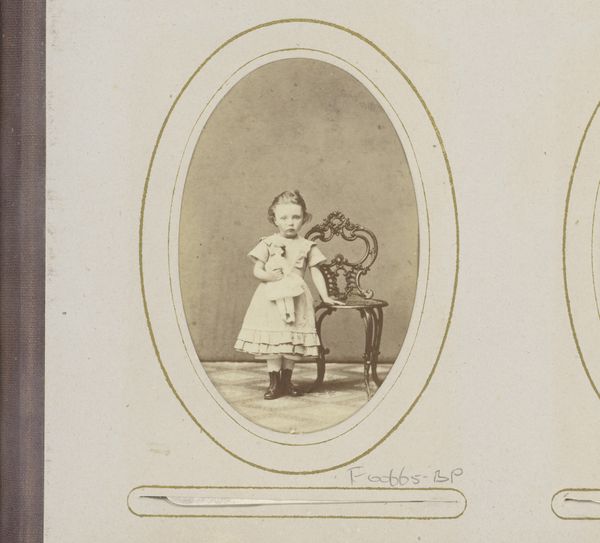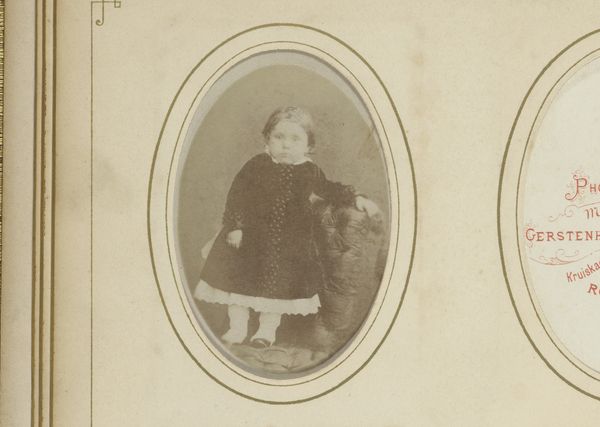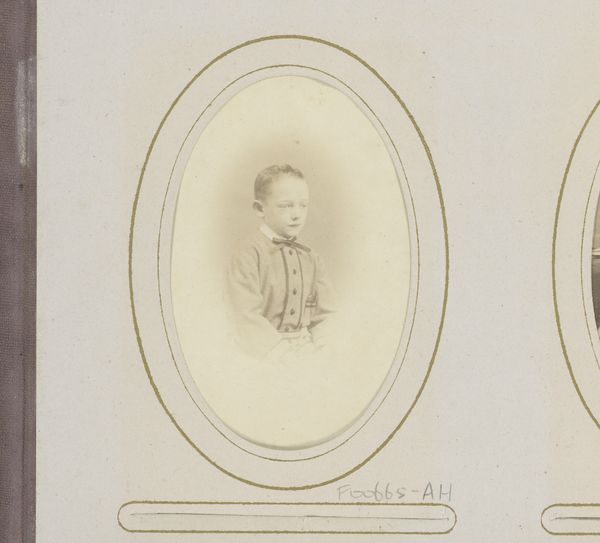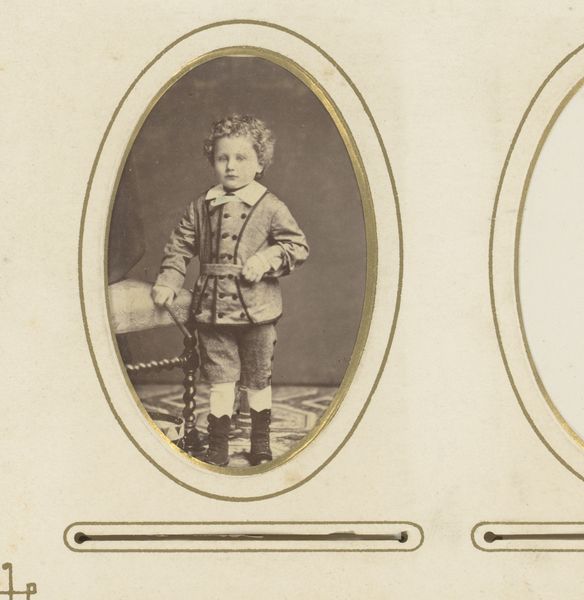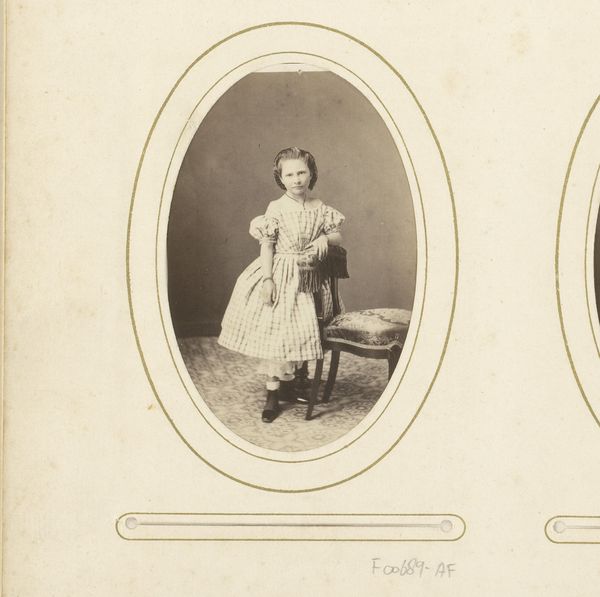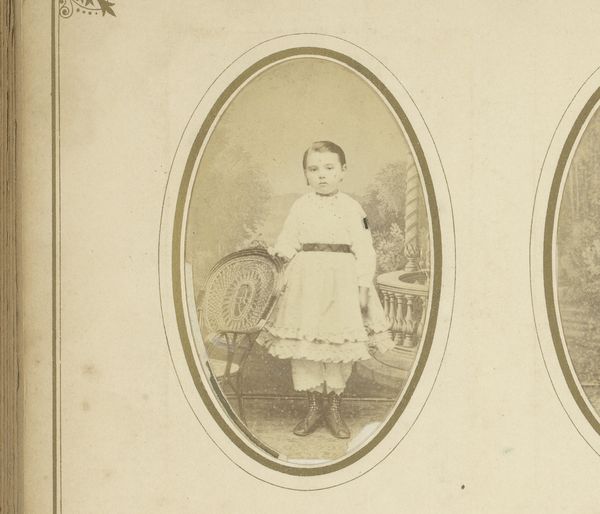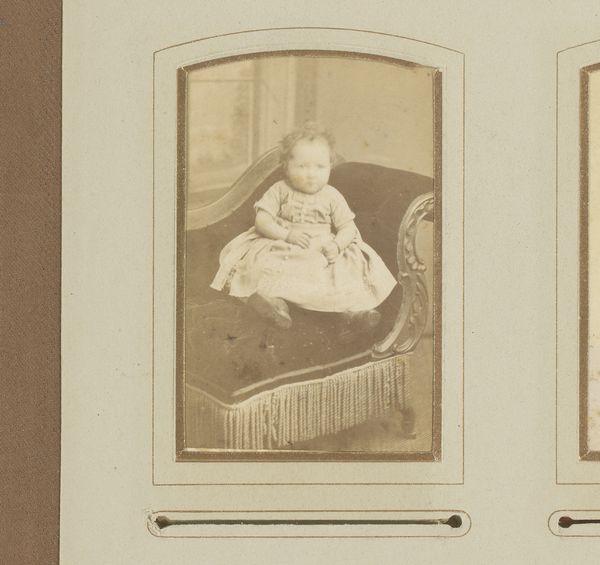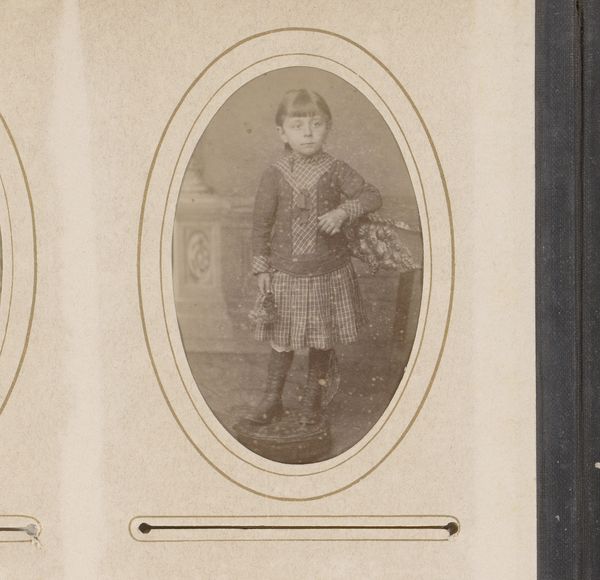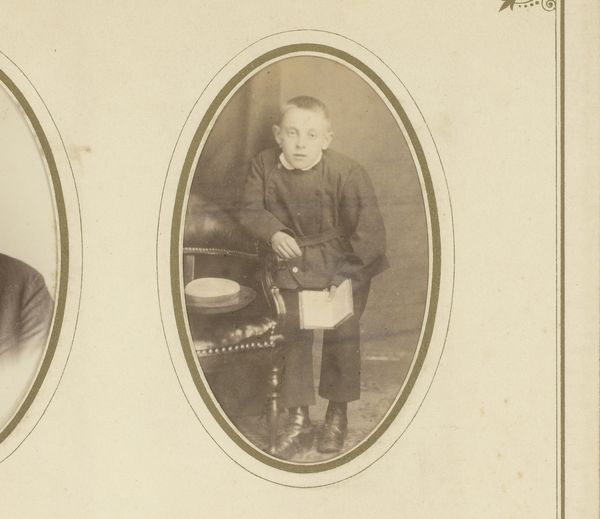
Portret van een jongen, staand bij een stoel, aangeduid als Derk van der Wal 1866 - 1877
0:00
0:00
photography
#
portrait
#
photography
#
genre-painting
Dimensions: height 87 mm, width 53 mm
Copyright: Rijks Museum: Open Domain
Curator: Here we have a photograph, dating from around 1866 to 1877, thought to be a portrait of Derk van der Wal by Benjamin van der Heide. Editor: My first thought is how much this looks like a stage play. The kid seems so posed against the painted background; even the chair feels like a prop. Curator: It's a genre painting through the relatively new medium of photography! We have to remember how disruptive photography was to portraiture. Mass production altered our social relationship to imagery, particularly around middle-class portraiture. Editor: True. And think of the labour involved. The production of these backdrops, for instance. And even the woven detail of that chair would have been carefully crafted; its presence tells us something about the family’s aspirations. Also, consider the materiality of the photo itself. The paper, the chemical process of the photographic development… Curator: Absolutely, and let's not forget the studio itself! Imagine the performance that went into getting a young child to pose like this. Consider how photography, even at this point, was establishing its own aesthetic norms – stiff posture, staged settings… a whole ritual surrounding image production. Editor: I also wonder about the kid’s clothing – quite utilitarian, but seemingly tailored. Did the photographer offer clothing or was that from the sitter’s personal belongings? Curator: An interesting point! The photograph flattens all this materiality into one image that obscures labor; instead, we can find meaning in the child’s class identity. It’s fascinating to think how such images codified ideal childhood appearances, especially the performance of childhood as social position. Editor: It does show how photography democratised portraiture… but that democratization came at a cost. So many labour inputs went into crafting these moments, for better or for worse. Curator: Absolutely, both image and artifact provide invaluable insights! Editor: Definitely an important object when thinking about the social and economic context of photography.
Comments
No comments
Be the first to comment and join the conversation on the ultimate creative platform.
